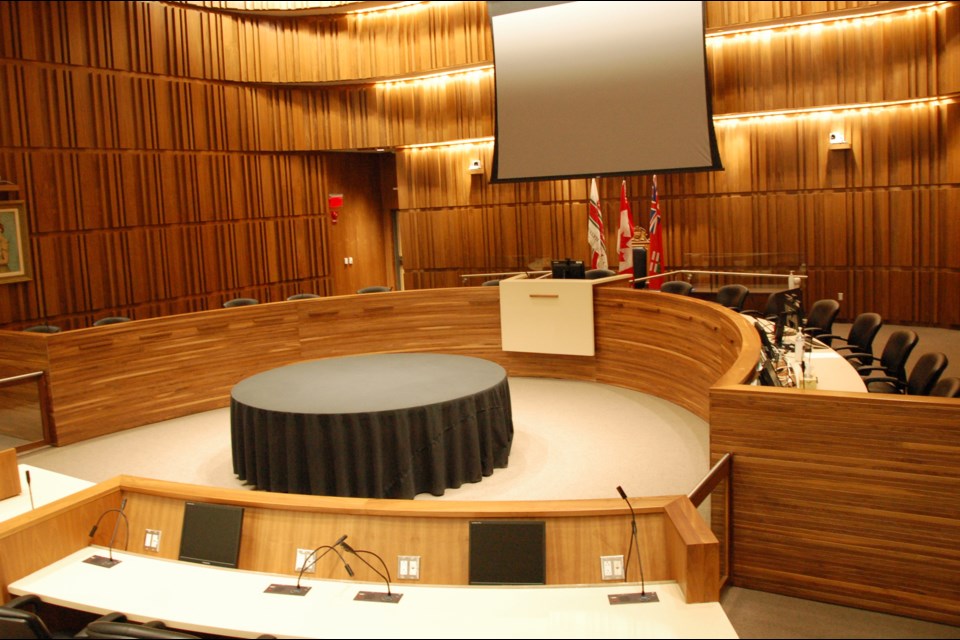Guelph will once again be voting to elect two councillors from each of six wards during next year’s municipal election, but whether those positions are full or part-time remains up in the air.
In a 9-4 decision during a special meeting on Wednesday evening, city council opted to go against a team of consultants’ recommendation to switch to eight wards, each with one full-time councillor. Council did decide to adjust current ward boundaries in an effort to address current and forecasted population disparities between wards.
“Do we have a requirement to be bold right now? and is it the right thing … to be bold right now? I land on no,” said Mayor Cam Guthrie, noting he previously thought it would be better to have a smaller council. “I just don’t buy that it has to be a bold decision right now.
“It (the current system) seems to be working.”
In a recently released report, a consultant team from Watson & Associations recommended the eight-ward model with eight full-time councillors in order for elected officials to work “undistracted” by other obligations on “increasingly complex” city business.
“The number of voices at the table has a profound impact on the decisions we make,” said Coun. Mike Salisbury, who voted along with Guthrie to retain the existing system. “It’s harder to get support for a bad idea if you need to get seven people to agree with you.”
Joining them were councillors Phil Allt, Christine Billings, Cathy Downer, Dan Gibson, James Gordon, June Hofland and Leanne Caron.
Opposing the motion were councillors Dominique O’Rourke, Bob Bell, Mark MacKinnon and Rodrigo Goller.
The recommended eight-ward model “has the most equal and equitable distribution” of population between wards, argued MacKinnon.
“Why would we settle for anything less than the best ward boundaries?” he questioned his colleagues ahead of the vote, noting he’s not opposed to having eight wards with 16 part-time councillors. “Smaller wards … allows us to have excellent geographic distributions.”
Eight wards would also allow for the “easy” creation of additional wards in future, added O’Rourke, who also points to two-member wards as a more difficult system to adopt proportional representation in the future, if allowed by the provincial government.
It would also reduce duplication of efforts, stressed Goller, explaining residents often approach both ward councillors on issues.
Wednesday’s decision comes two days after another special council meeting that saw numerous delegates urge council to stick with a six-ward system with 12 part-time councillors.
During public consultations conducted through a months-long process, the eight-ward idea was selected as the first choice by 35 per cent of participants. Coming in second and third were two six-ward options, with 31 and 21 per cent, for a combined 52 per cent support.
“We have to respect that,” Caron said of public opinion on the matter.
When it comes to deciding whether councillors should be considered full or part-time, council referred that to a planned remuneration advisory committee. That approach was approved 11-2, with councillors MacKinnon and Bell in opposition.
“The job description shouldn’t say whether it’s part-time or full-time, just ‘these are your responsibilities,’” suggested Downer, who moved the motion sending it to the committee for a recommendation to council.
“We don’t have jurisdiction on this,” added Allt, referring to the fact there’s no legislative requirement for councillors to put in a specific number of hours. “I have no strong opinion on which is superior.
“(This) gets the issue of our job description and remuneration out of our hands.”
In making its remuneration recommendation, council instructed the committee to consider comparator communities that include both single and two-tier governance.
A motion to have that committee make a recommendation regarding whether additional administrative staffing is needed was proposed by Coun. Mike Salisbury and withdrawn shortly after Mayor Cam Guthrie noted he plans to bring the need to the 2022 budget discussions anyway.
The ward boundaries themselves may be appealed to the Ontario Land Tribunal (formerly the Local Planning Appeal Tribunal) within 45 days of council’s decision, though neither the number of wards nor the employment status of councillors can be appealed.
If there is no appeal, or the appeal is defeated before the end of the year, the council-approved ward boundaries will come into effect for next year’s municipal election.
Should an appeal be filed and successful, with the tribunal setting different ward boundaries before the end of the year, those would be in place for the 2022 municipal election. However, the current ward boundaries will remain for at least another term if an appeal is filed but unfinished before the start of 2023.
